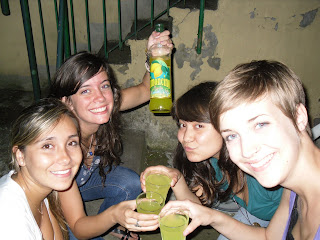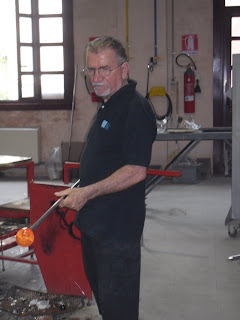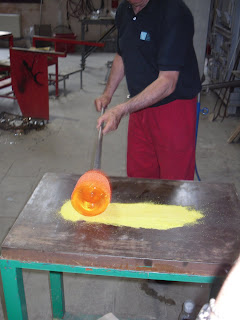the official name of the duomo is the basilica di santa maria del fiore. construction of the duomo began in 1296 and was completed in 1436. the dome was the last thing to be completed, and it is from this architectural feat that the basilica gets its nickname. the basilica is one of italy's largest churches, and, until modern times, the dome was the largest in the world. it's still the largest brick dome ever constructed.
the exterior of the basilica is green, pink, and white marble, designed in the 19th century in the gothic revival style.
the entire complex of the cathedral, located in piazza del duomo, also includes the baptistery and giotto's campanile.
the duomo was built on the site of an earlier cathedral, dedicated to santa reparata, the remains of which are carefully being excavated from beneath the floor of the cathedral. visitors are allowed to visit this area, and it's incredible. the mosaic floors they've unearthed are unbelievable, and they're dated back to the fourth century! i strongly encourage you to click that link, which takes you to the wikipedia article about santa reparata. it's super interesting.
italian society has such a different feel for history and historical artifacts than in the states. besides the fact that the states lack any structures over 600 years old, i doubt that you'd be able to walk around anything mid excavation like you can do here. it's incredible. the environment is very sharing; the history of this church is open to be viewed by everyone.
but anyway. the cathedral of santa reparata had become too small to serve the growing population of florence, so arnolfo di cambio designed the new church. it's interesting to note that arnolfo was also architect of santa croce and the palazzo vecchio, two other hugely important florentine buildings.
like i said, the building began on september 9, 1296, and continued steadily until arnolfo's death in 1302, when work on the cathedral slowed for 30 years. luckily, in 1331, the arte della lana (guild of wool merchants) took over patronage for the cathedral's construction and appointed giotto di bondone to oversee the work. when giotto died in 1337, his assistant, andrea pisano, continued the work until construction was again halted due to the black plague outbreak of 1348.
luckily, just a year later, work resumed on the cathedral under a series of architects. the nave was completed in 1380, and, by 1418, only the dome remained incomplete.
in 1419, the arte della lana held a design competition for the dome. the two main competitors were lorenzo ghiberti (already well-known for his bronze relief work on the doors of the baptistery) and filippo brunelleschi, who ultimately won. ghiberti, however, was appointed co-architect, earning a salary equal to brunelleschi while spending most of his time on other projects. when brunelleschi fell ill, the project was briefly in the hands of ghiberti, who soon discovered that the whole thing was beyond him, and, by 1423, brunelleschi took over sole responsibility.
the dome was completed in 1436. it was the first 'octagonal' dome in history to be built without a wooden supporting frame (the roman pantheon, a circular dome, was built in 117 AD but with support structures). a huge statue of brunelleschi has been erected outside of the palazzo dei canonici in the piazza del duomo; the artist is depicted looking up at his greatest achievement, the largest masonry dome in the world.
the dome as seen from the bell tower
so, like i said, the building of the cathedral had started in 1296 with arnolfo's design and was completed in 1469 with the placing of a copper ball atop the cupola.
however, the decoration of the exterior (the coolest part of the cathedral, imho) began in the 14th century but wasn't completed until 1887. the original façade was designed by arnolfo, but the lowest portion was only ever finished, and it was dismantled in 1587 because the grand duke thought it was too tacky for renaissance times. the exterior of the basilica was then left bare until 1864, when a competition was held to design a new façade. emilio de fabris won the competition, and work was begun in 1876. in 1887 the neo-gothic façade was completed. the different colors of marble are all from different places in italy. these marble bands had to repeat the pattern already existing on the walls of the baptistery and the bell tower.
i've spent so much of this post describing the exterior, but that's because the exterior has the most goin' on. which is not to say that the interior isn't incredible, but it's just huge and gothic and vast and austere.
there are, however, some incredible works of art inside. since the construction of the cathedral was funded by the public, most of the art in the church honor men of civic importance during that time period. my favorite work in the exterior was the huge clock above the main entrance. it's a fresco done by paolo uccello, and it only has one hand, showing 24 hours in accordance with hora italica (italian time), a period of time ending with sunset at 24 hours.
the decoration of the dome itself is breathtaking, especially when you consider what a feat painting that surface, 3,6000 square meters, must have been. the dome was painted by a number of different people over the course of (i think) about 25 years.
TO BE CONTINUED. AGAIN.

































